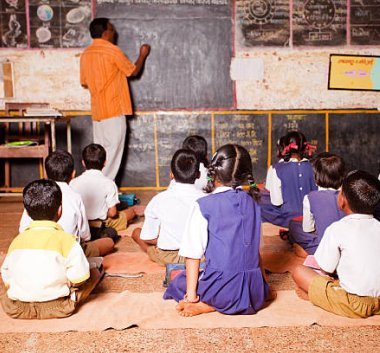Educating Village and Slum Children
Introduction
Education is the basis of a prospering society. Yet access to quality education remains a challenge for many children, especially those living in villages and urban slums. Let’s discuss the importance of educating village and slum children. And find out the potential solutions to bridge the education gap.
Understanding the Challenges
1. Limited Resources:
Schools in villages often lack basic infrastructure such as dedicated and spacious classrooms, regular electricity, and clean drinking water. Slum children face similar challenges, with overcrowded classrooms and lack of basic facilities.
2. Financial Limitations:
Many families in villages and urban slums struggle to afford education-related expenses of uniforms, books, and transportation for their childrens.
3. Social Barriers:
Traditional beliefs and societal norms may prioritize boys’ education over girls’, leading to gender disparities in getting access to education.


Importance of educating village and slum children
- Empowerment:
Education empowers children to come out from the cycle of poverty. And also creates better opportunities for them, their family and their community. It provides them with knowledge and skills required for personal and professional growth.
- Health and Well-being:
Educated children are more likely to make informed decisions regarding their health and well-being. And it leads to overall improved quality of life.
- Community Development:
Educated individuals participate and contribute to the social, economic, and cultural development of their communities. That develops and creates a more inclusive and sustainable society.
Strategies for Empowerment
1. Community Engagement:
Engaging local communities is crucial for understanding their unique needs and challenges. Establishing partnerships with community leaders and stakeholders can help in getting support for educational initiatives.
2. Mobile Education Units:
Mobile education units can bring learning resources and teachers directly to villages and slum areas. And overcome any type of geographical barriers between teachers and childrens. These units can offer flexible schedules and tailor-made syllabus to accommodate the needs of various uneducated childrens.
3. Vocational Training Programs:
Introducing vocational training programs can help children to learn practical skills that are relevant to their local context and areas. Thereby, improving their chances of employability and entrepreneurial potential.
4. Scholarships and Financial Aid:
Providing scholarships and financial aid can reduce the financial burden on families of these children. Hence, making education more accessible to village & slum children. Government initiatives and non-profit organizations can play a important role in funding these programs.
5. Empowering Girls:
Implementing initiatives specifically aimed at empowering girls through education can help address gender inequalities. If safe and inclusive learning environment is created. Girls get encouragement to pursue their education without fear of judgement or violence.
Conclusion
Education is a privilege and a fundamental right that every child deserves. By prioritizing the education of village and slum children, Nihit Foundation invests in the future generation. And makes the way for a more equal and prosperous society. Through collaborative efforts and innovative solutions, we can break down barriers to education. We can also ensure that every child has the opportunity to fulfill their potential and contribute meaningfully to the world. Together, let’s build a brighter future for all children, regardless of their background or circumstances.
